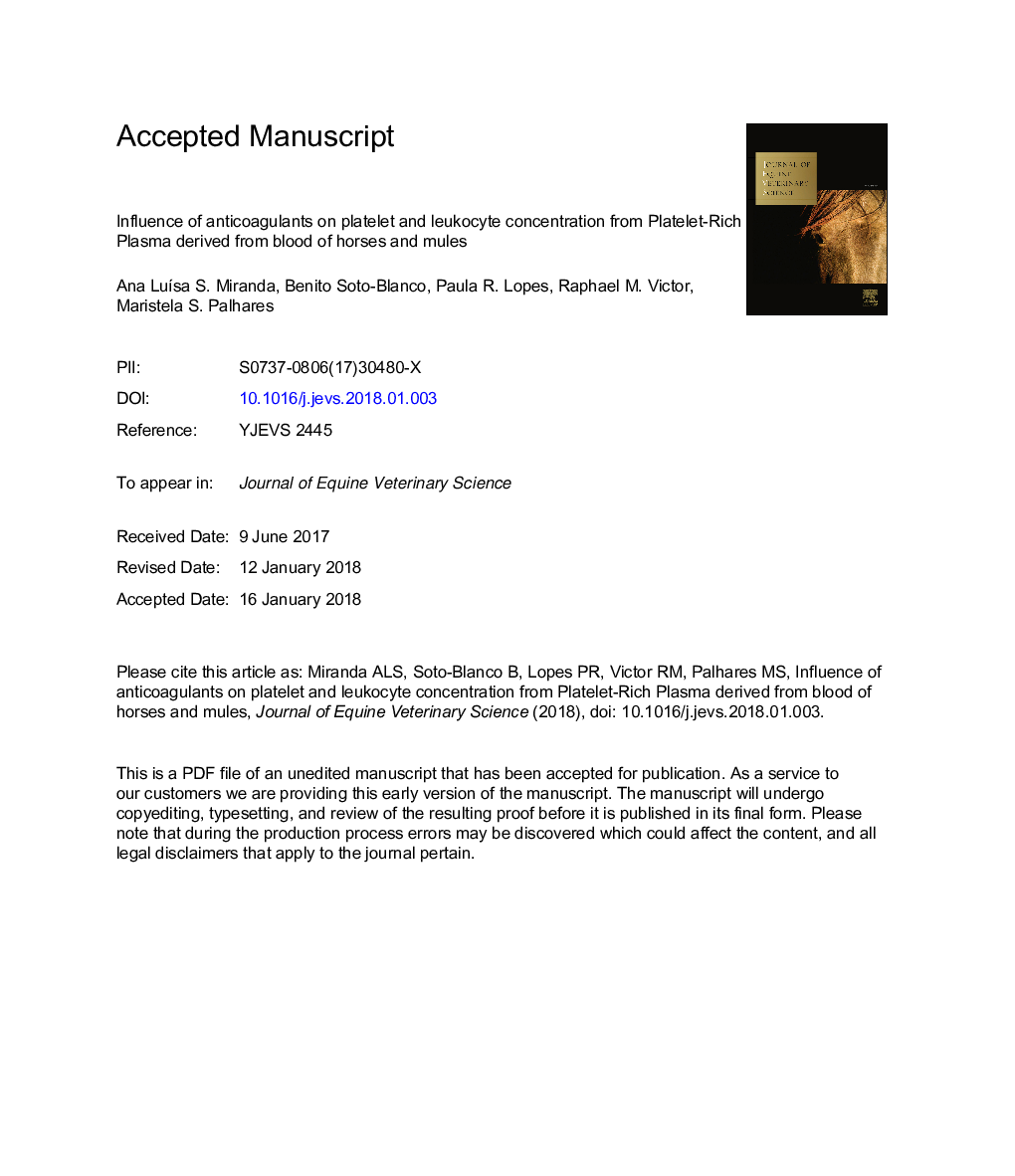| Article ID | Journal | Published Year | Pages | File Type |
|---|---|---|---|---|
| 8483181 | Journal of Equine Veterinary Science | 2018 | 18 Pages |
Abstract
Platelet-Rich Plasma (PRP) is a biological product often used to promote tissue repair, due to its composition of growth factors. The aim of this study was to compare the viability of platelets on horses and mules and the influence of two different anticoagulants-dextrose citrate (ACD) and sodium citrate (CIT)-while obtaining PRP. Eight horses and eight mules were used, with two replicas each. PRP was obtained after single centrifugation at 133 g for 8 minutes. Blood analysis was performed on hematologic analyzer, and morphology was evaluated through optical microscopy of phase inversion. Platelet concentration on PRP (when compared with total blood samples) was 1.42 times in horses and 2.0 times in mules using ACD, and 1.39 times in horses and 2.69 times in mules using CIT. The protocol was more efficient in concentrating mules' platelets when compared with horses', and CIT was responsible for a larger PRP leukocyte reduction on both equids. CIT was a better anticoagulant for mules' PRP procurement, due to its promotion of higher platelet concentration.
Related Topics
Life Sciences
Agricultural and Biological Sciences
Animal Science and Zoology
Authors
Ana LuÃsa S. Miranda, Benito Soto-Blanco, Paula R. Lopes, Raphael M. Victor, Maristela S. Palhares,
